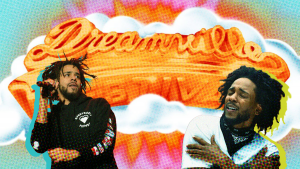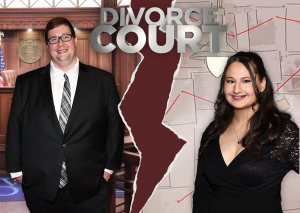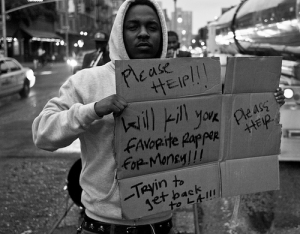Looking back to my days of luscious Italian silk curls which brought me the affectionate nickname “ondas de chocolate” (chocolate waves) from the girls in my high school Spanish class, I now cannot help but recall a memory of a possible foreshadowing to the narrative of this boy’s life. One of the first clubs I used to sing at had this local stand-up comic. He had an old joke that went like this:
“A man who balds at the temple is a great thinker. A man who balds at the crown is a great lover. A man who balds in both thinks he’s a great lover!” *insert sitcom laugh track*
There are multivitamins, diet adjustments, scalp massages, bottled fibers, oils, minoxidil, finasteride, low-level laser therapy, transplants, extractions, platelet-rich plasma injections, 3D printing and wigs. These are some of the great lengths the male cosmetic industry has gone to preserve our identity. We’re talking $4.8 billion in length. Beyond the numbers, there’s a pressure many men have been learning to manage for centuries.
Many of the magazine model celebrities we idolize are not immune to this dilemma as many leading men currently sport hairpieces and have received transplants. Buddies have approached me with their own experiences. With body dysmorphia magnified by the permeating influence of pop culture, it can be rough. The bottom line: losing something that, at face value, is a signifier of youth, health and vitality can cut deep wounds in one’s self-esteem.
Hair loss is a universal problem affecting both men and women. One of the most common types is called androgenetic alopecia, also known as male pattern baldness. The reason it occurs is that follicles become sensitive to a hormone on the scalp called dihydrotestosterone (DHT).
It binds to follicles and shrinks them, so they no longer produce hair. According to http://www.menspharmacy.co.uk, by 20 years old, approximately 20 percent of people have at least some visible hair loss. By 30, 25 percent of people have visible hair loss, and by 50, 50 percent of people have at least some noticeable hair loss.
Hormonal changes, autoimmune diseases, thyroid disorders, poor sleep, substance abuse and especially stress often cause hair loss in young men and women.
Unanticipated life events can bring about anxiety, depression, excessive junk food consumption, insomnia, cigarettes, binge drinking and mary jane. All of these translate into hair problems. Chronic stress pushes hair follicles into premature shedding. Spikes in sugar consumption (an inflammatory substance) dries out hair. A lack of sleep will deteriorate your body. Excessive drinking depletes your body of essential minerals. Smoking constricts blood vessels, which are needed to deliver nutrient to hair follicles. And the jury is still out on THC in marijuana.
College can often amplify these vices, which is why it is best to be cognizant of the repercussions. Our twenties are a crucial age in which we must hold our health as paramount. Regardless, fellas, I am still an advocate for work hard, play hard.
For the time being, some of us will be rocking a buzz cut. There is seemingly an unspoken camaraderie every time two bald men run into each other at the gym or on a college campus and lock eyes. There’s that head nod, a smile and the instant bond.
It would seem that men lacking the whipped cream to top off their head have to try a little harder out there. Comedian Larry David said it the best:
“Have a conversation with a bald man some time. Go ahead. Do yourself a favor. Tell me you don’t walk away impressed. That your day was not made a little richer by virtue of the fact that you were in Bald’s presence.”
Stay strong, boys!




